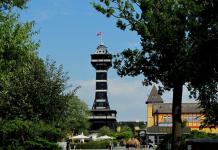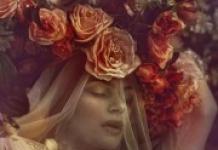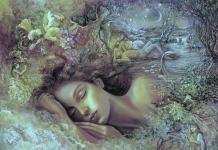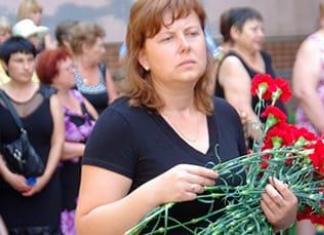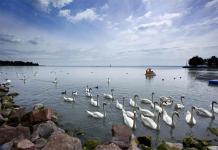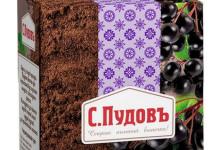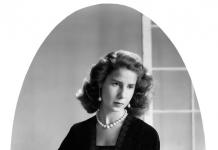MOSCOW, December 25 - RIA Novosti. The Nativity of Jesus Christ is one of the main Christian holidays, which is celebrated by Catholics, Orthodox and Protestants. Only dates differ (December 25, January 7) and calendar styles (Julian and Gregorian).
Burning candles are a symbol of light, stars that shone in the sky at the hour of the birth of Christ. Among the Christmas traditions is the Christmas wreath, which is usually woven from branches of pine, spruce, fir and decorated with candles, ribbons, wooden figurines. It is hung above the door, on the wall or placed on the Christmas table. Often, four candles are inserted into the Christmas wreath - according to the number of weeks of Advent (Christmas fast) immediately preceding Christmas. Every Sunday, one of these candles is lit at worship.
Luther is also credited with the invention of Christkind (analogous to Santa Claus), who distributes gifts to children on Christmas Day on December 25th. He wanted to keep the custom of giving gifts to children, but since the Protestants did not recognize Catholic saints, Luther replaced Nikolaus with Christkind.
Catholic Christmas falls on December 25 every year. The traditions and customs of this holiday are carefully observed by Catholics and Protestants.
Already on December 25, the Catholic Church and believers will celebrate Christmas. This great holiday is dedicated to important events that took place more than two thousand years ago. Everyone remembers the story of the Virgin Mary, whom the Lord God chose as the Mother of his Son. The miraculous birth of the Divine Infant has become not just an important, but a central date in the religious world.
Why do Catholics celebrate Christmas on December 25th?
If earlier the Christian Church was united, then since 1054 it was divided into Orthodox, Catholic and Protestant. Since ancient times, Catholics and Protestants began to count days according to the Gregorian calendar. The Orthodox Church continued to honor traditions and used the Julian calendar, so to this day Russia celebrates Christmas on January 7th.

Now it is difficult to say which of the two systems of calculus is the most accurate. The Orthodox Church does not speak out on this matter. Catholics also do not give an answer to this question, but simply continue to celebrate Christmas, as is customary in the Catholic Church, on December 25th.
Catholic Christmas Traditions
Advent is an important period of preparation for Christmas. 4 weeks before the holiday, Catholics observe fasting, do good deeds and attend church every day. If the children at this time obey the elders and help them, then they receive paper hearts or straw, which they subsequently hang on the Christmas tree.
Now it is difficult to imagine the house of a Catholic without a nativity scene, which depicts the moment of the birth of Jesus Christ. Previously, such figurines could only be seen in the church, but now people make them from wood or wax and install them in their homes. Nativity scenes are necessarily decorated with outfits, greenery and give them color to make them look more natural and festive.

Catholics begin to celebrate Christmas on the evening of December 24th. First they go to church, attend services and say prayers. Upon returning home, families begin to decorate the Christmas tree, set up a nativity scene, and prepare a festive dinner. It is customary to celebrate the holiday with the family, so most often on the night of December 24-25, the streets are empty.
On Christmas Eve, that is, December 24, it is forbidden to eat until the first star, which believers call Bethlehem. After that, unleavened bread, fish, kissels and homemade cakes are served on the table. The meal is necessarily accompanied by numerous congratulations and wishes.
Catholics always leave one seat at the table free. Thus, they show that they are ready to accept and feed any intruder. There is an opinion that this place is considered to be a reminder of deceased relatives.
After the end of the Christmas mass, people begin to exchange gifts and start celebrating. It usually starts after midnight on December 25th and lasts until January 1st. During this period, you can visit Christmas markets on the streets, as well as witness performances and skits based on biblical stories.
The most common dish on the Christmas table is the turkey, and almost all Catholics in the world cook it. However, in some countries this is considered a bad omen, as happiness can fly out the window. Therefore, instead of poultry, they cook fish, pork or any other meat.

On Christmas night, there should be a lot of dishes on the table, but overeating is highly discouraged. After dinner, the family can get busy opening presents, chanting, or walking around the city at night, decorated in Christmas style.
Already on December 25, Catholics and Protestants will celebrate Christmas. In Russia, initially actively preparing for the New Year. Despite the fact that this holiday has no religious significance, traditions and important prohibitions are also associated with it. The site site team wishes you happiness and success in 2018, and don't forget to press the buttons and
24.12.2017 05:43
Easter is the fundamental holiday of the Christian religion. He is awaited with trepidation in the heart and faith...
RIA News. Olga Semenova
The Nativity of Jesus Christ is one of the main Christian holidays, which is celebrated by Catholics, Orthodox, and Protestants. Only dates differ (December 25, January 7) and calendar styles (Julian and Gregorian).
On the night of December 25, Protestants - Lutherans, Anglicans, part of the Methodists, Baptists and Pentecostals, as well as 11 out of 15 local Orthodox churches in the world using the New Julian calendar, which so far (until 2800) coincides with the Gregorian, celebrate Christmas together with the Catholics.
Each country and each denomination has its own characteristics in the celebration of Christmas. Protestants have them too. Protestantism, along with Orthodoxy and Roman Catholicism, is one of the three main areas of Christianity. But unlike others, the Protestants decided to live in the manner of the early Christians, rejecting almost everything that had been established by the Church over many centuries. Believing in Christ, Protestants reject church traditions, rituals and some dogmas.
In Protestantism, the fundamental difference between the priest and the laity has been removed, and the church hierarchy has been abolished. Worship in Protestantism is simplified as much as possible and reduced to preaching, prayer and singing psalms and hymns in the native language. A clergyman is deprived of the right to confess and forgive sins, he is accountable to the Protestant community. Many sacraments have been abolished, there is no celibacy. Prayer for the dead, worship of saints and feasts in honor of saints, veneration of relics and icons have been rejected. Prayer houses have been freed from altars, icons, statues, and bells. There are no monasteries and monasticism. The Bible is recognized as the only source of dogma, and sacred tradition is rejected.
The number of different Protestant denominations is in the tens of thousands. Their exact number is almost impossible to calculate. Some Protestant associations are called differently in different parts of the world. So, in German-speaking countries, the word "Protestants" is still understood only as Lutherans, in contrast to the Calvinists, who are called the "Reformed Church".
Christmas among Protestants is one of the so-called twelfth holidays. Moreover, it was the Protestants who shaped its modern look. For example, the custom of decorating the Christmas tree was invented by Protestants. Once it was crowned with a figure of Christ, then with an angel or the Star of Bethlehem.
There is a legend that Martin Luther himself was the first to come up with the idea of lighting candles on a Christmas tree.
Burning candles are a symbol of light, stars that shone in the sky at the hour of the birth of Christ. Among the Christmas traditions is the Christmas wreath, which is usually woven from branches of pine, spruce, fir and decorated with candles, ribbons, wooden figurines. It is hung above the door, on the wall or placed on the Christmas table. Often, four candles are inserted into the Christmas wreath - according to the number of weeks of Advent (Christmas fast) immediately preceding Christmas. Every Sunday, one of these candles is lit at worship.
Luther is also credited with the invention of Christkind (analogous to Santa Claus), who distributes gifts to children on Christmas Day on December 25th. He wanted to keep the custom of giving gifts to children, but since the Protestants did not recognize Catholic saints, Luther replaced Nikolaus with Christkind.
Just like Catholics, Protestants, in particular Lutherans, set up a manger for Christmas and play out the scene of the Savior's Birth. It is believed that in this way Bethlehem, as it were, enters houses and churches, becomes closer and more understandable.
Christmas services are held in Protestant churches. After the traditional solemn hymns, the pastor's festive sermon sounds.
On Christmas Day, Protestants greet people with the words “Christ is born!”, receiving in response: “Praise Him!”. They try to celebrate Christmas at home, at the festive table.
Protestants, including Anglicans, do not fast and eat poultry dishes at Christmas - turkey, duck, goose. Seventh-day Adventists (Sabbath-keeping Protestants) are mostly vegetarian and do not consume pork, alcohol, coffee or tea.
French Catholics and Protestants, forgetting about scholastic disputes, on the night of December 25, feast on oysters and traditional goose liver.
The material was prepared on the basis of information from open sources
Christmas is one of the most important religious holidays, an official public holiday in almost 100 countries around the world. On this day, true believers glorify the birth of the baby Jesus Christ in Bethlehem. Christmas is preceded by a multi-day fast, which ends with the appearance of the first evening star. When is Christmas 2016 celebrated by Orthodox, Catholics and Protestants? The Orthodox Church praises the incarnation of the Savior on January 7, the Roman Catholic - on December 25.
How and when is Orthodox and Catholic Christmas celebrated?
According to the canons of the Holy Church, Orthodox Christmas is the triumph of the sacrificial divine love of God the Father for the Son and the triumph of hope for salvation. On the eve of the birth of Christ, Orthodox churches serve the All-Night Vigil, at which they read and sing prophecies about Christmas. Matins begins at midnight: the priests sing the canon "Christ is born" and read fragments about the Nativity from the Gospel. Folk traditions of celebrating the Nativity of Christ and Christmas time are rooted in the distant past. During this period in Russia it was customary to arrange fortune-telling, youth games and festivities. Christmas time begins with traditional treats - kutya, pies, porridge. By the holiday, the owners certainly clean the house, wash in the bath, cook 12 dishes - this number is associated with 12 apostles who accompanied Jesus in earthly life. Another obligatory Christmas ritual is carols glorifying the birth of the infant Savior.

What date is Protestant and Catholic Christmas celebrated?
The Catholic Church celebrates Christmas according to the Gregorian calendar - December 25th. The holiday precedes the Advent period, which begins 4 weeks before Christmas. Its purpose is to prepare Catholics for a more profound experience of the celebration. According to the established tradition, on December 25, three liturgies are served in churches - a night mass, a mass at dawn, and a daytime mass. The celebration lasts 8 days (December 25-January 1), the entire Christmas period, the clergy serve masses in white robes. For real Catholics, Christmas is a family holiday that has an exclusively religious significance. On December 24, all family members attend the service; on Christmas Eve they gather at a plentiful festive table. Another characteristic element of Catholic Christmas is the installation of a dressed-up fir tree on the eve of the holiday. In European countries, spruce symbolizes the tree of paradise with abundant fruits.
On December 25, 2017, Catholics and Protestants celebrate Christmas, what date do the Orthodox celebrate, why. What are the similarities and differences in the celebration of Christmas among Catholics, Protestants and Orthodox, Christmas hymns.
In 2017, Catholics and Protestants celebrate Christmas on December 25th. Due to the divergence of church calendars, the Orthodox Christmas falls on January 7, which corresponds to December 25 in the old style. If the Catholic and Orthodox celebrations of the Nativity of Christ are somewhat different from each other, then this holiday in the Protestant, Reformed Church has significant differences.
On the night of December 24-25, Christmas comes for Catholics and Protestants. This is preceded by Christmas Eve - the last preparatory day before the holiday. Catholics and Protestants make evergreen wreaths, decorate them, and hang them over doors. Not infrequently, four candles are arranged on the wreaths, symbolizing the four Sundays of Advent - a special preparatory time for Christmas. It should be noted that Protestants do not have a special Christmas fast, and Catholics celebrate the time before Christmas with fasting.
Catholics try to be sure to attend mass on Christmas Eve evening, as well as three masses on a festive day - at night, at dawn and during the day.

In the evening, after the rising of the first star, before visiting the temple, Catholics traditionally all sit down at a table full of symbolic dishes.
In the afternoon, on the very holiday of Christmas, Catholics prepare dishes traditional for their countries. Catholic churches and houses of parishioners are decorated with festively decorated nativity scenes - scenes from the Christmas story. Among Catholics, sculptural images of this plot are common. The theme of the Nativity of Christ was especially popular with Catholic painters of the Early Renaissance period.

Christmas for Catholics, Protestants and Orthodox, similarities and differences
Members of some Protestant churches also set up nativity scenes in their homes. Although Protestants also have a special meeting with the singing of Christmas carols and a festive word from the pastor, it is customary to celebrate Christmas itself at home, in the family circle. Like all Christians, Protestants consider this holiday one of the twelve main ones.
There is an opinion that the installation of Christmas trees in houses originates from the Protestants. The evergreen tree, symbolizing eternal life in a peculiar way, began to be decorated with candles, as a symbol of the gospel light of truth. The Protestants rejected icons, all saints, the sacred hierarchy, liturgies, leaving the strict faith of the early Christians. But they wanted to somehow highlight this day, make it joyful especially for children, so decorating the Christmas tree turned out to be very useful.
St. Nicholas - Santa Claus - was also rejected by the Protestants, so Luther introduced Kristkind - the Christ Child, appearing as an angel, more often depicted as a girl or girl. Kriskind gives gifts to children from Protestant families at Christmas, like St. Nicholas among Catholics and part of the Orthodox (the pronunciation of the name differs in different countries), as well as Santa Claus.

Christmas for Catholics, Protestants and Orthodox, similarities and differences
The Orthodox observe a 40-day fast before Christmas, and on Christmas Eve, after dark, they traditionally eat sochivo (kolivo), without arranging a large symbolic feast. Then many go to church for Vespers, after which they most often go to confession and wait for the festive Divine Liturgy, where they partake of the Holy Mysteries of Christ.
The Orthodox mostly use the icons of the Christmas holiday, but they also arrange nativity scenes for joy. In Russia, Christmas trees and pine trees are also decorated - the only trees that look beautiful at this time of the year.
Catholics, Protestants and Orthodox have a time after the Nativity of Christ when the holiday continues and believers carry the good news of the birth of the Savior to the world.
Gaudete (lat. Rejoice) is a Christmas Christian hymn created in the 16th century.
Deck the Halls (also Deck the Hall, Rus. Decorate the hall) is a famous Christmas and New Year song.
Christmas for Catholics, Protestants and Orthodox, similarities and differences


